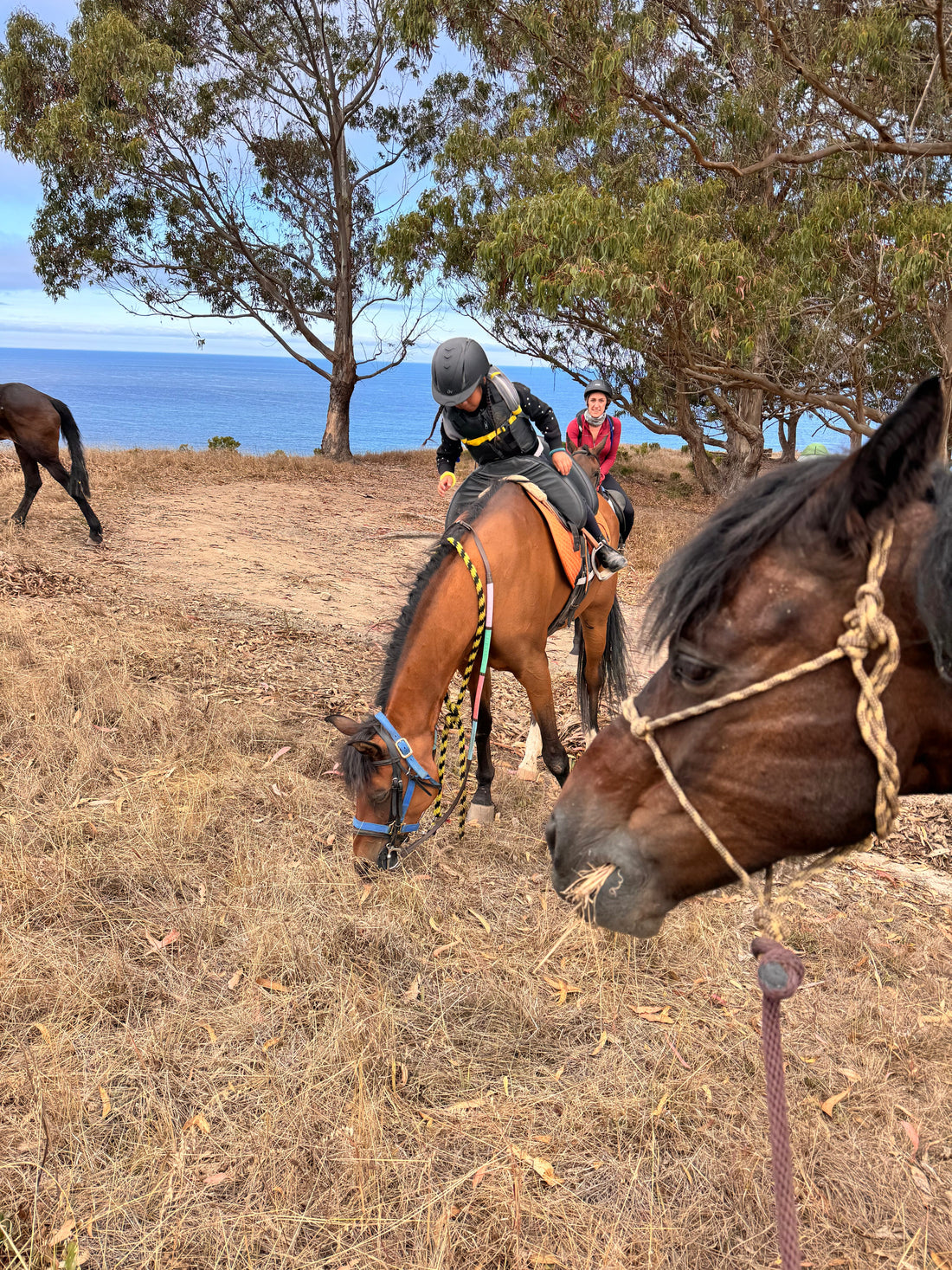How Far Can a Horse Really Go?
A Trail Riding Survival Guide for Horse Owners
If you’ve ever wondered how many miles a horse can do in a day — or how often they need to eat and drink while out on the trail — you’re not alone.
These are the kinds of questions we get all the time from trail riders, especially those venturing beyond short loops around the barn.
The answers?
They depend on a lot more than you’d think.
In this guide, we’ll break down:
-
How far most horses can ride safely in a day
-
How often they need water, food, and breaks
-
How to tell when your horse has had enough
-
What to pack and plan for on a longer ride
-
And why preparation is the key to keeping trail horses sound, safe, and happy
Let’s dive in.
🔹 How Many Miles Can a Horse Ride in a Day?
The average trail horse in decent shape can comfortably cover 10–15 miles in a day at a walk, with breaks and good footing. If your horse is fit and used to longer rides, that number can go up to 20–25 miles — or even more for endurance-trained horses.
That said, distance alone doesn’t tell the whole story.
Elevation, terrain, weather, and pace all play a huge role.
A 10-mile mountain climb can be harder on a horse than a 20-mile flat ride.
In our 300 Mile Bootcamp, we vary the trail conditions constantly — some days are steep and technical, others long and open. We don’t just rack up miles; we build strength, conditioning, and confidence across all kinds of terrain.
🔹 How Often Should Horses Drink Water?
Horses need access to water at least every 2–3 hours on a trail ride — more if it’s hot, humid, or the horse is sweating heavily.
A good rule of thumb:
If you’re thirsty, your horse probably was 30 minutes ago.
We make a habit of riding where natural water sources (streams, ponds) are available, but we also carry collapsible buckets and offer water from the trailer post-ride. Some horses need encouragement at first, especially if they’re not used to drinking on the trail — but it’s a habit worth developing.
🔹 Do Horses Need to Eat on the Trail?
Short rides (under 2 hours) usually don’t require a snack break. But anything longer? Bring hay.
We recommend:
-
Letting horses graze if safe grass is available
-
Offering small hay portions during water breaks
-
Avoiding grain mid-ride unless advised by your vet
In the bootcamp, our horses often get hay during trailer rides to the trailhead and post-ride recovery snacks. We monitor hydration and recovery closely — especially during longer or hotter days.
🔹 Signs Your Horse Is Getting Tired (Or Overworked)
Horses won’t always tell you with a dramatic stumble. Often, the signs are subtle:
-
Shortening stride
-
Tripping more than usual
-
Slower response to cues
-
Tail swishing or head tossing
-
Loss of enthusiasm
Pay attention. Trail riding is all about reading your horse in real time — knowing when to push, when to pause, and when to head home.
In our training rides, we observe each horse closely. The first 100 miles are about letting them find their rhythm. The next 100 builds conditioning. The last 100 cements that calm, responsive, ready-for-anything mindset.
🔹 Trail Safety Essentials: What You Should Always Bring
Before you hit the trail, pack smart:
-
Water & bucket
-
Hay or grazing time
-
Electrolytes (especially in hot weather)
-
Hoof pick
-
Halter & lead rope
-
First aid kit (for horse & human)
-
Phone with GPS
-
Emergency contact card
Also: let someone know where you’re going and when you expect to be back.
🔹 How Often Should You Ride to Build a Trail Horse?
This one’s key.
If you want a solid, confident, relaxed trail horse, you need frequency and variety.
One trail ride every two weeks won’t do it — especially if each ride is only a few miles.
Our program works because we ride 5–6 days a week in all kinds of places. Horses get into a rhythm, they learn what to expect, and they relax. That’s the secret.
Final Thoughts
Trail riding can be the best thing you ever do for your horse — and for yourself. It’s grounding, peaceful, and an amazing way to build partnership. But it also requires prep, care, and awareness.
Whether you’re planning your first 10-mile ride or preparing for a multi-day camping trip, remember:
-
Condition your horse gradually
-
Pay attention to hydration and energy
-
Ride with curiosity, not just a goal
-
And most of all, put your horse’s comfort first
If that sounds like a lot — it is. But it’s worth it.
And if you ever want help getting your horse truly trail-ready, with 300+ miles of real exposure under their girth, you know where to find us.
📩 Want More?
Follow us on Instagram @socalhorseadventures for trail riding tips, videos, and updates from the ranch.

